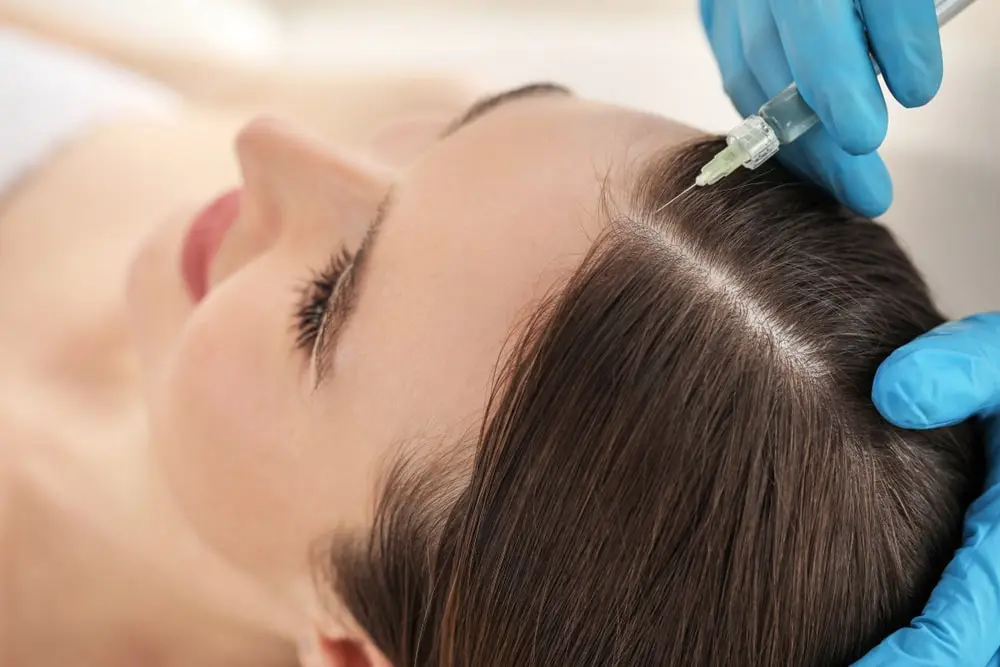Platelet-rich plasma (PRP) therapy has gained significant attention in recent years, especially in the world of aesthetics and regenerative medicine. While the buzz around this treatment continues to grow, it's essential for patients to understand what PRP can and cannot do. Many people go into these procedures with the hope of dramatic, immediate results, only to be met with gradual progress that requires time and consistency. For example, in platelet rich plasma hair treatment, improvements may take months to fully manifest, and expectations must align with the natural pace of hair growth and follicular recovery.
What PRP Therapy Is—and What It Isn’t
PRP is a treatment derived from a small sample of your own blood. After the sample is drawn, it’s spun in a centrifuge to isolate the plasma that’s rich in platelets. These platelets contain growth factors that can promote healing, reduce inflammation, and encourage tissue regeneration. The substance is then injected into targeted areas of the body, such as joints, skin, or the scalp, depending on the desired outcome.
Despite its biological basis and natural appeal, PRP is not a miracle solution. It doesn’t work overnight, and it doesn’t offer the same dramatic effects as surgery or synthetic drugs. Instead, it harnesses your body’s own healing mechanisms to gradually improve the condition being treated. Whether you're looking to reduce fine lines, address hair thinning, or recover from an injury, PRP should be seen as a tool for enhancement, not instant transformation.
The Timeline: Results That Require Patience
One of the most misunderstood aspects of PRP therapy is the timeline of visible results. Most patients begin to see subtle changes after a few weeks, but optimal results often take three to six months—and sometimes longer. The regenerative process is slow because it’s natural. Your body needs time to respond to the injected growth factors, stimulate cellular activity, and repair damaged tissues.
In aesthetic uses, such as facial rejuvenation, patients may notice improved skin tone and texture over several sessions. When used for orthopedic concerns like tendonitis or joint pain, relief may take several weeks to develop. For hair loss treatments, the visible increase in hair density typically appears around the third or fourth month, with continued improvement over the year.
Patients expecting immediate results are often disappointed not because the treatment is ineffective, but because the biological clock of regeneration simply doesn’t match the urgency of their hopes. Having a realistic expectation from the start can significantly enhance satisfaction with the outcome.
Not Everyone Is a Candidate
Another important consideration is that PRP therapy is not suitable for everyone. Its effectiveness can vary depending on age, overall health, the severity of the condition being treated, and the body's ability to heal. For example, younger patients with early signs of hair thinning or mild joint issues tend to respond more positively than older individuals with advanced degeneration or scarring.
Additionally, lifestyle factors such as smoking, poor nutrition, or chronic illnesses like diabetes can reduce the effectiveness of PRP. Patients must undergo proper medical evaluation to determine if PRP is the right approach. Being transparent about your medical history and following pre-treatment guidelines will also help optimize results.
Some patients may also need complementary therapies. For instance, combining PRP with microneedling or laser treatments for skin rejuvenation can enhance outcomes. Similarly, hair restoration may benefit from the use of supplements or topical treatments in conjunction with PRP injections. Understanding this holistic approach will help you make informed decisions and avoid relying solely on one treatment modality.
What to Expect During and After Treatment
PRP therapy is generally considered safe, minimally invasive, and relatively quick. The entire procedure usually takes less than an hour, and most patients can return to normal activities the same day. Since the treatment uses your own blood, the risk of allergic reactions is minimal. However, mild side effects like redness, swelling, or tenderness at the injection site are common and typically subside within a few days.
Post-treatment care plays a crucial role in ensuring the best possible outcome. Patients are usually advised to avoid strenuous activity, excessive sun exposure, and certain medications that might interfere with the healing process. Following these recommendations is essential for allowing the growth factors to do their work undisturbed.
Furthermore, one session of PRP is rarely sufficient. Most treatment plans involve three to four initial sessions spaced about a month apart, followed by maintenance sessions every four to six months depending on individual response. Understanding this schedule ahead of time can prevent frustration and foster a more patient, steady approach to improvement.
Managing Expectations for Long-Term Success
The most important takeaway for anyone considering PRP is to manage expectations realistically. It’s not uncommon for patients to read success stories or see before-and-after photos and assume they’ll experience identical results. However, each body responds differently, and factors like genetics, age, lifestyle, and even stress levels can influence the outcome.
Rather than expecting dramatic, rapid changes, it’s more constructive to track subtle improvements over time. Taking progress photos, maintaining a treatment journal, or consulting with your provider at regular intervals can help you stay informed and motivated throughout the process.
Also, it’s essential to understand that PRP doesn’t cure the underlying causes of aging, injury, or hair loss. Instead, it offers a method of support and enhancement. Maintaining a healthy lifestyle, following through with aftercare, and staying consistent with treatments will yield the best long-term results.
Conclusion
PRP therapy offers a promising, natural way to support the body’s healing and regenerative abilities. But like any treatment, its success hinges on realistic expectations, proper patient selection, and a commitment to the full process. Whether you're pursuing PRP for aesthetic reasons, orthopedic support, or hair restoration, the key to satisfaction lies in patience, preparation, and partnership with a knowledgeable provider. By understanding what PRP can genuinely offer—and what it cannot—patients can set themselves up for a more rewarding and empowering experience.

Comments on “Setting Realistic Expectations With PRP: What Patients Need to Know”